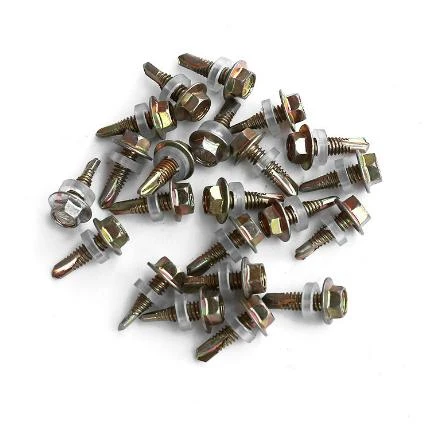

self tapping hex head metal screws
Dec . 04, 2024 22:43 Back to list
self tapping hex head metal screws
Understanding Self-Tapping Hex Head Metal Screws
In the world of hardware and construction, fasteners play a critical role in ensuring the integrity and durability of structures. Among various types of fasteners, self-tapping hex head metal screws have gained popularity due to their unique features and versatility. This article explores what self-tapping hex head metal screws are, their applications, advantages, and some tips for proper usage.
What are Self-Tapping Hex Head Metal Screws?
Self-tapping screws are designed to create their own threads as they are driven into materials. The hex head refers to the shape of the screw head, which has six flat sides allowing for a better grip when using tools. These screws are typically made from metallic materials such as stainless steel, carbon steel, or various alloys, making them suitable for applications requiring strength and resistance to corrosion.
Self-tapping hex head screws can be categorized into two types thread-forming and thread-cutting. Thread-forming screws create internal threads in the material without removing any material, while thread-cutting screws remove material to create the thread. This feature is particularly useful when fastening into hard materials like metal, wood, or plastic, as it eliminates the need for pre-drilling holes.
Applications of Self-Tapping Hex Head Screws
Due to their robust design and ease of use, self-tapping hex head metal screws are widely used across various industries. They are particularly common in automotive, manufacturing, and construction applications. Here are a few notable applications
1. Automotive Industry Self-tapping screws are often employed in vehicles for assembling components, securing panels, and attaching brackets. Their resistance to vibration ensures that the screws remain secure even under dynamic conditions.
2. Construction From securing metal frames to fastening roofing materials, these screws are ideal for construction projects. Their compatibility with different substrates makes them a go-to choice for both commercial and residential buildings.
3. Electronics In electronics assembly, self-tapping screws are used to secure housings and enclosures. The ease of installation helps in reducing assembly time, crucial for manufacturers aiming to improve efficiency.
4. Appliances and Furniture They are also utilized in assembling appliances and furniture where robustness and durability are required. Their self-tapping feature allows for quick and secure fastening without additional pre-drilling.
Advantages of Using Self-Tapping Hex Head Metal Screws
self tapping hex head metal screws

2. Strong Grip The hex head design provides a better grip for tools, enabling higher torque application. This makes it easier to drive the screw into tough materials.
3. Versatility These screws can be used in various materials including wood, metal, and plastic, making them suitable for diverse applications across different industries.
4. Durability Made from metal alloys, they offer excellent resistance to corrosion and wear, ensuring a long service life even in demanding environments.
Tips for Proper Usage
To maximize the performance of self-tapping hex head screws, consider the following tips
1. Choose the Right Size Select a screw that matches the thickness of the material for optimal engagement and strength.
2. Use the Correct Tool Always use a compatible drill or driver that matches the size and type of the screw head.
3. Maintain Steady Pressure When driving the screw, maintain steady pressure to ensure proper penetration and threading.
4. Avoid Over-tightening Over-tightening can strip the threads or break the screw. Apply enough torque to secure the screw without compromising the material.
Conclusion
Self-tapping hex head metal screws are invaluable in a multitude of applications, offering efficiency, strength, and versatility. Whether in construction, automotive, electronics, or general assembly, these screws provide a reliable fastening solution. By understanding their features and proper usage, users can leverage their benefits to enhance their projects' effectiveness and durability.
Latest news
-
High-Strength Hot-Dip Galvanized Bolts-Hebei Longze|Corrosion Resistance&High Strength
NewsJul.30,2025
-
Hot Dip Galvanized Bolts-Hebei Longze|Corrosion Resistance&High Strength
NewsJul.30,2025
-
Hot Dip Galvanized Bolts - Hebei Longze | Corrosion Resistance, High Strength
NewsJul.30,2025
-
High-Strength Hot Dip Galvanized Bolts-Hebei Longze|Corrosion Resistance, Grade 8.8
NewsJul.30,2025
-
Hot Dip Galvanized Bolts-Hebei Longze|Corrosion Resistance,High Strength
NewsJul.29,2025
-
High-Strength Hot Dip Galvanized Bolts - Hebei Longze Metal Products Manufacturing Co., Ltd.|corrosion resistance&high strength
NewsJul.29,2025

